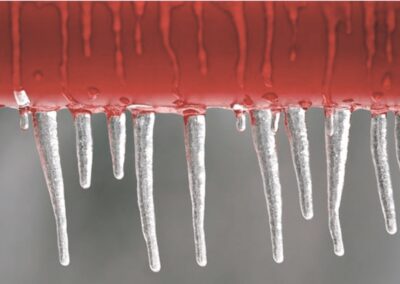Corrosion in a fire sprinkler system can be a property owner’s worst nightmare. As corrosion in pipe happens overtime, a pipe leak may occur unexpectedly. This scenario leaves the property owner searching for answers.
As a property owner searches for an answer, it’s essential that they find quality, scientific explanations. There have been myths floating around about corrosion, which could influence your strategy to control the problem. With a little help from our friends at Engineered Corrosion Solutions, we put together five myths about corrosion, which need to be exposed.
Myth #1: Microbiologically Influenced Corrosion (MIC) is the main cause of pin-hole leaks in fire sprinkler systems.
Oxygen gas is the main cause of corrosion. Oxygen expels metal from the pipe walls and produces solid by-products. Bacteria are regularly found in fire sprinkler systems. However, there is no association between the level of microbial contamination and corrosion leaks. Bacteria make less that 10% of pin-hole leaks.
Myth #2: The entire system must be replaced once pin-hole leaks are discovered on a regular basis.
Often times, fire sprinkler systems are removed and completely replaced when the bulk of the piping has no significant damage from corrosion. Oxygen corrosion is extremely localized. The corrosion happens within trapped air pockets in wet pipe systems, and in pools of trapped water in dry and pre-action systems. You can keep your wallet happy by just removing the damaged piping and then establishing a comprehensive corrosion management system.
Myth #3: Bad water causes fire sprinkler system leaks
Water chemistry does vary throughout the country, but most fire supply water is very fresh and clean. The fire system’s water source is from municipal water supply.
Myth #4: Galvanized steel works better than black steel to slow corrosion
Galvanized steel piping for dry pipe fire sprinkler systems can start leaking 3-4x faster than black steel.
Black steel pipe can disperse oxygen corrosion. It is not true in galvanized pipes, where oxygen corrosion can localize in individual pits in the metal.
Myth #5: The quality of the fire sprinkler piping and fittings have dwindled
Material defect from the manufacturer is very rare. The quality of fitting and tubular goods being used today reaches or surpasses American Society for Testing and Materials standards. Corrosion is rarely the result of defective piping. It is the exposure to different temperatures and the exposure to oxygenated water that creates quickened attack at the weld seams.
There is a way to slow down the corrosion process. Oxygen creates major issues, when it comes to corrosion in the fire sprinkler system. The amount of oxygen that is introduced to the piping has a direct impact with the speed of corrosion.
Remove the oxygen by filling systems with nitrogen. This can ultimately stop corrosion. Dry Pipe Nitrogen Inerting and Wet Pipe Nitrogen Inerting are the most effective risk reducers for corrosion control, keeping you and your sprinkler system happy.

